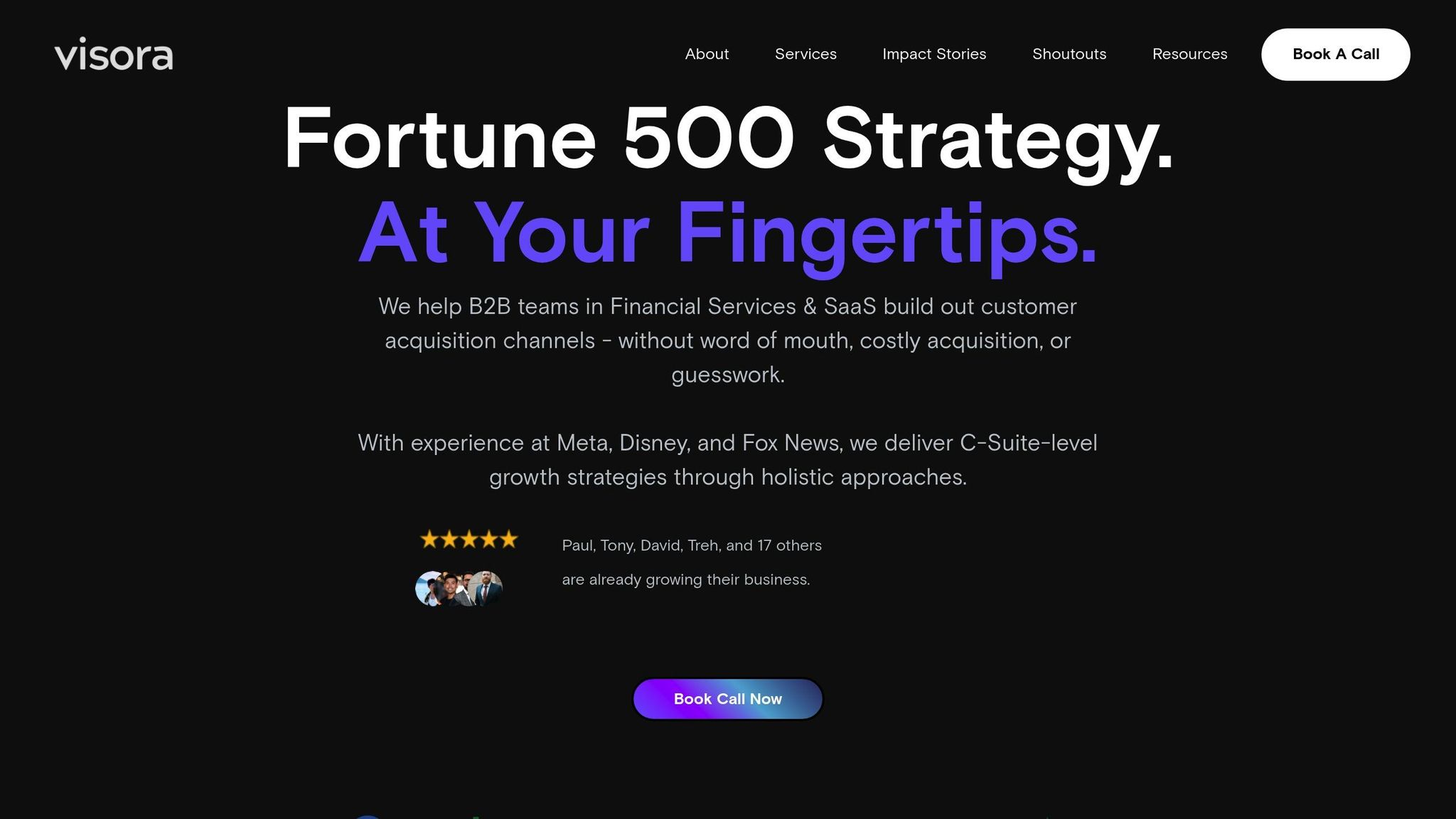
Looking for the best marketing automation platform for your financial B2B business? Here's a quick guide to help you evaluate and choose the right one. These platforms streamline tasks like email campaigns, lead scoring, and analytics while addressing industry-specific needs like compliance and data security.
| Platform | Industry Focus | Strength | Limitation |
|---|---|---|---|
| ProFundCom | High | Compliance tools, investor lead scoring | No major limitations |
| Pardot | Medium | Customization options | Complex setup, generic lead scoring |
| Marketo | Low | General features | High cost, lacks financial-specific tools |
This guide simplifies the platform evaluation process, ensuring you choose a solution tailored to your business goals.
Before diving into platform comparisons, it's essential to outline your marketing automation needs. Financial B2B businesses often encounter specific challenges that require tailored solutions.
Start by documenting the key marketing issues you face:
| Challenge | Impact | Priority Level |
|---|---|---|
| Low Website Traffic Quality | Only 15% of traffic comes from target accounts | High |
| Resource Constraints | 41% struggle with operational efficiency | High |
| Trust Building | 96% of consumers distrust advertising | Critical |
| Sales-Marketing Alignment | Misalignment leads to wasted resources and missed opportunities | Medium |
Pinpoint gaps in areas like lead management, campaign tracking, and customer engagement. Use these insights to create measurable goals that will guide your platform search.
Peter Gillett, CEO of Zuant, highlights that cross-department collaboration to map automation flows helps clarify diverse buyer journeys.
Define specific performance metrics to aim for, such as:
Once your objectives are clear, prioritize features that address your challenges. For financial B2B companies, these are non-negotiable:
Consider running a pilot project to test these features and assess their impact.
Focus on the features that directly impact your goals and ensure compliance needs are met.
| Feature Category | Must-Have Features | Extras to Consider |
|---|---|---|
| Compliance | Audit trails, regulatory frameworks | Custom compliance rules |
| Lead Management | Investor scoring, engagement tracking | Advanced segmentation |
| Analytics | Financial content insights, ROI tracking | Custom reporting |
| Integration | Compatibility with financial CRMs | Third-party tool connections |
| Security | Data encryption, access controls | Advanced threat protection |
Once you've identified the key features, assess how each platform performs. Use metrics that reflect real business outcomes. For instance, companies using marketing automation effectively often see a $5.44 return for every $1 invested within three years.
"Look at your data, figure out what it's telling you from a very high level, then build your roadmap." - Chris Gordon, Head of Client Success, Noticed
Track these metrics during your evaluation:
With performance data in hand, compare the top platforms side by side. Here's a quick breakdown of leading options for financial industry needs:
| Platform | Industry Focus | Strength | Limitation |
|---|---|---|---|
| ProFundCom | High | Tailored compliance tools and investor-specific lead scoring | No major limitations |
| Pardot | Medium | Strong customization options | Complex setup and generic lead scoring |
| Marketo | Low | Comprehensive general features | High cost and lacks financial-specific tools |
When making your final decision, prioritize platforms that specialize in financial services. Research shows 48% of marketers believe automation strengthens customer relationships. Key areas to consider include:
"Be helpful. Marketing automation is about finding those opportunities - making sure you're in the right place at the right time, and not where you shouldn't be." - Sean Donahue, Director of Email Marketing, Power Digital
Take advantage of trial periods to test essential features and confirm the platform fits seamlessly into your workflow.
Once you've chosen your platform, a well-organized setup process ensures it meets your goals and functions effectively.
Setting up a marketing automation platform requires careful planning. A defined timeline helps keep everything on track. Use project management tools to list tasks and group them into categories for easier monitoring:
| Implementation Phase | Key Activities | Timeline |
|---|---|---|
| Data Management | CRM integration, data cleanup, field mapping | Weeks 1-2 |
| Core Setup | Email templates, workflow design, compliance rules | Weeks 3-4 |
| Campaign Planning | Content creation, automation rules, testing | Weeks 5-6 |
| Training & Testing | Staff education, pilot campaigns, refinements | Weeks 7-8 |
Focus on tasks that offer quick wins - those that are easy to accomplish but deliver high impact. This approach can highlight the platform's benefits early on. Involve teams from different departments to improve collaboration and achieve better results.
Once your timeline is ready, make sure your team is well-prepared through structured training sessions.
Getting your team up to speed is essential for successful platform use.
"People are realising that even if I have lots of data, and even if I've automated all these messages, without great content, it doesn't matter." - Allen Nance, Global CMO of Emarsys
Here’s how you can approach staff training:
A layered training system ensures your team becomes confident and proficient over time.
Make the most of the resources provided by your platform to ensure a smooth implementation process.
"We have set up communication limiters [within our platform] so that a contact can never receive more than three campaigns from us in a quarter. It's very important to use marketing automation to control the frequency, to control the relevancy and to make sure you have high quality content." - Stephen Yeo, Marketing Director at Panasonic System Communications Europe
Here are some key resources to tap into:
Leveraging these tools can make the implementation process smoother and help your team get the most out of the platform.
Financial B2B companies have specific needs when it comes to marketing automation. These platforms must address compliance, security, and lead management challenges unique to their industry.
Marketing automation platforms tailored for financial B2B companies need strong security and compliance tools. Here's a breakdown of essential features:
| Feature Category | Key Components | Business Impact |
|---|---|---|
| Security | Data encryption, authentication controls, audit trails | Safeguards sensitive data and builds client trust |
| Compliance Tools | GDPR compliance, documentation tracking, consent management | Helps meet regulatory standards and reduces legal risks |
| Integration | CRM connectivity, compatibility with financial software, API access | Improves operational efficiency and ensures accurate data |
| Analytics | Predictive modeling, ROI tracking, attribution reporting | Supports smarter, data-driven decisions |
Statistics show that implementing marketing automation with these features can boost lead volumes by 27% and improve conversion rates by 30%. Security is especially critical - platforms with frequent updates and strong authentication measures help prevent breaches.
As the marketing automation industry is expected to hit $13.7 billion by 2030, GTM consulting plays a key role in navigating this growth. A massive 91% of B2B companies using marketing automation consider it "very important" for their digital marketing success. Additionally, companies that leverage consulting see a 14% rise in productivity and a 12% drop in marketing costs. On top of that, email marketing through automation platforms delivers a return of $36 for every $1 spent. Partnering with a GTM consultant ensures these benefits are effectively implemented.

Financial B2B companies looking to maximize their automation efforts can turn to specialized GTM consultants like Visora. Their services include:
Choosing a platform that not only meets technical requirements but also aligns with business goals is essential. Look for solutions that provide excellent customer support, detailed tutorials, and thorough onboarding to ensure a smooth transition.
Picking the right marketing automation platform requires a focused approach based on your specific needs. Start by outlining your business goals and key performance indicators (KPIs), then compare platforms and plan for implementation. Research shows that companies aligning sales and marketing efforts can boost revenue by as much as 208%, and 80% of users report generating more leads with marketing automation.
Critical factors for success include strong security measures, easy integration, scalable tools, and detailed analytics. These elements are essential for shaping your strategy moving forward.
With the marketing automation sector expected to grow 17.67% annually through 2027, making an informed choice is more crucial than ever. Establish a clear plan for implementation and ensure access to reliable support. For financial B2B companies, Visora offers expert assistance in selecting and implementing platforms tailored to industry needs, helping you achieve maximum ROI.